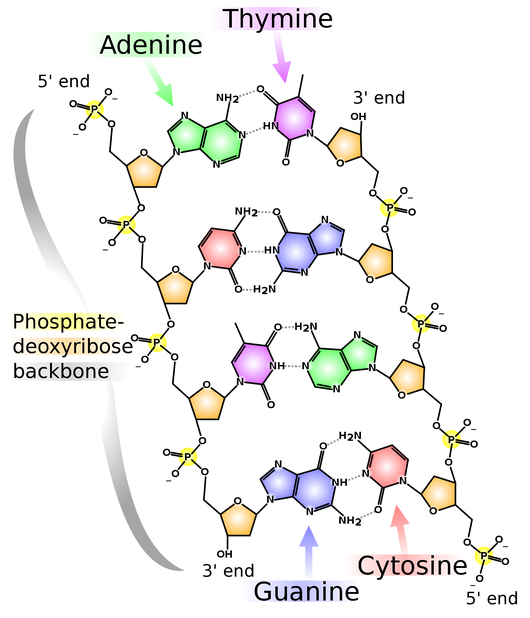Deoxyribose nucleic acid (DNA) is a substance contained in all cells that serves as a template for all cellular activity. Its sugar molecule is deoxyribose (hence its name), and it consists of the four nucleobases adenine, cytosine, guanine, and thymine, whose order determine its primary structure.
DNA is formed of two separate polymer strands, whose nucleotides pair off and bond with each other. These base pairing interactions define the secondary structure of a DNA molecule (see the figure below): adenine base pairs with thymine, and cytosine base pairs with guanine.

After base pairing takes place, the two complementary DNA strands are twisted into a double helix (see the figure below), which forms the tertiary structure of DNA and was first described by James Watson and Francis Crick in 1953.

Base pairing interactions serve a practical purpose for the DNA molecule, as they protect it from unwanted foreign bonding. Because of this safety feature of the double-stranded DNA molecule, many researchers believe that DNA evolved from single-stranded RNA, which creates somewhat of a chicken-and-the-egg scenario because DNA in turn contains a blueprint for the transcription of a special RNA molecule called (pre-)mRNA. During transcription, the pre-mRNA molecule is constructed by copying adenine, cytosine, and guanine into the growing RNA strand while replacing thymine with uracil.